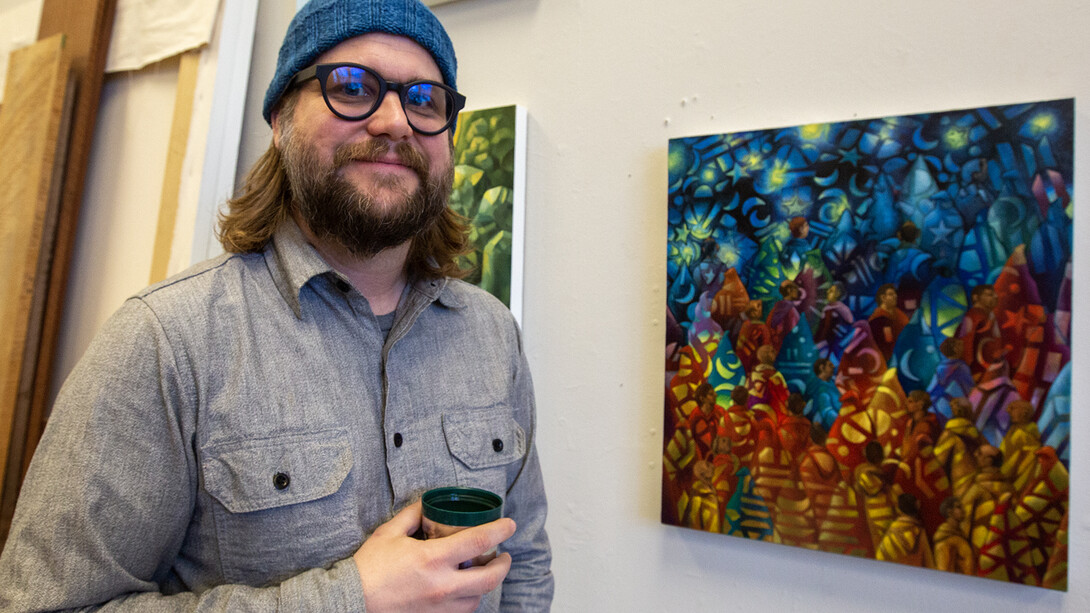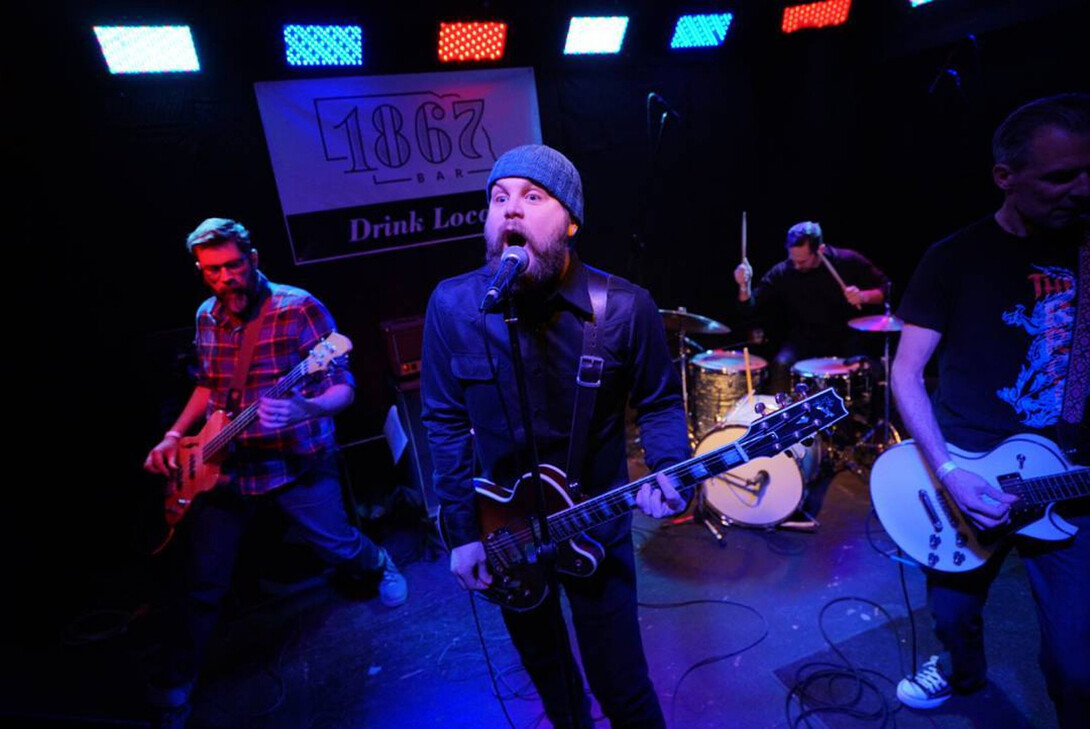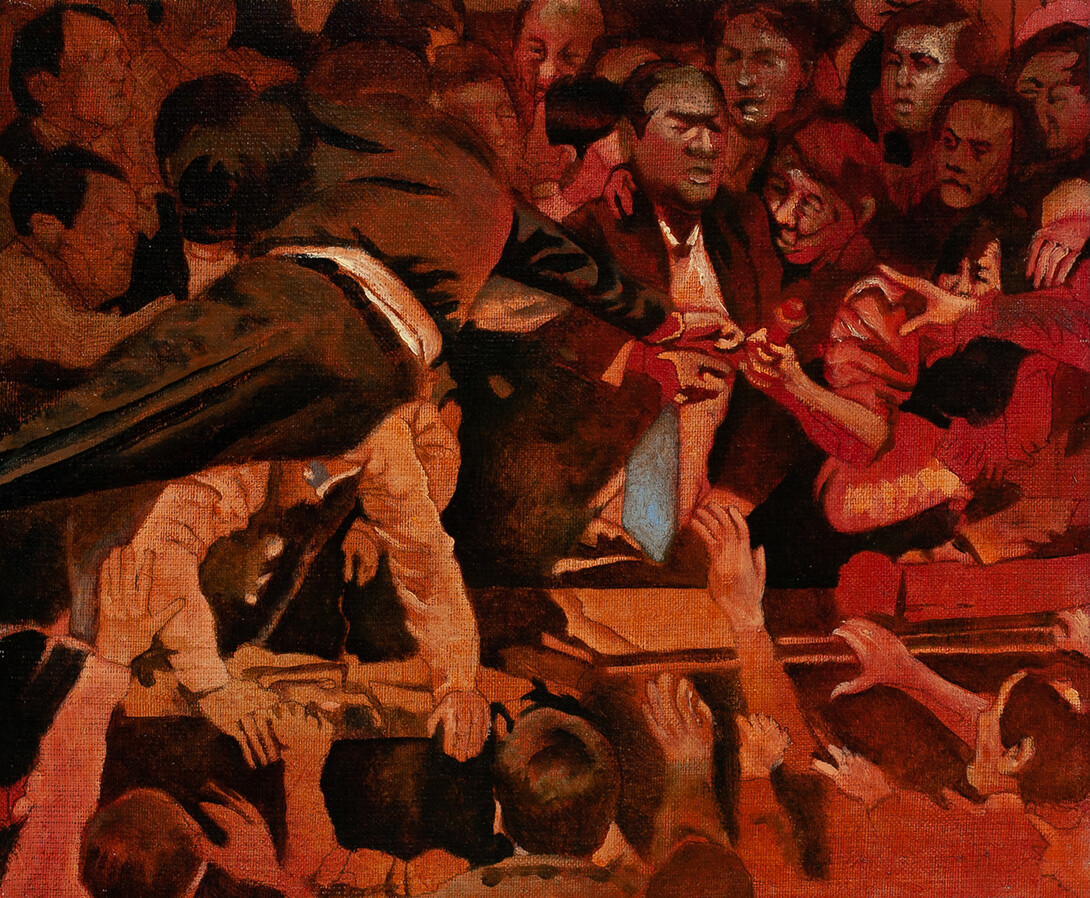
Editor’s Note — This feature is inspired by Sheldon Museum of Art’s “Unprecedented: Art in Times of Crisis” exhibition, which explores how artists have responded and documented periods of uncertainty and upheaval. Learn more about the exhibition and how you can go experience it.
Nebraska’s Byron Anway was on a roll in late 2019.
Professionally, his painting series of crowd scenes — from the fervor of large-venue concerts to throngs of fist-throwing politicians — was gaining traction. The work was featured in prestigious publications, showing in multiple exhibitions nationwide, and selling regularly. Anway was also teaching full time at the University of Nebraska–Lincoln, his alma mater, and curating an exhibition at the International Quilt Museum.
At home, he was enjoying life as a new father and touring regularly as the lead singer in the punk band Red Cities.
Then, the calendar year turned and the pandemic shutdown the world.
“When COVID hit and people stopped gathering, I knew immediately that was the end,” Anway said. “I could not imagine painting large crowds with everything that was happening.
“And that was OK because I was ready for a change.”

After earning a graduate degree from Nebraska U in 2011, Anway began searching for a new direction for his work. Under the guidance of faculty advisors, he had produced a good portfolio — but sought out something that was more him, more personal.
That journey led to a conversation and inspiration.
“A buddy showed me some photographs of Ukrainian politicians fighting,” Anway said. “They were incredible — all this excitement and danger captured in a single moment. It felt familiar, similar to the ethos that surrounds punk music.”
Back in his studio, Anway translated the images into his first crowd-related artworks — the resulting painting remains a favorite. The concept was fun and Anway dove in, creating multiple compositions of legislative throngs in battle.

When the fight scenes became too on the nose, mirroring the nation’s growing political divide ahead of the 2016 election, Anway pivoted to other crowd options — primarily concerts, sporting events, beach scenes, and even people gathered outside national morning shows. The work grew to be easy and, by the time COVID-19 made headlines, a little boring in terms of creativity.
“I knew I was near the end of this project, but I kept at it because I was getting into prestigious publications, featured in big shows and people were buying the work,” Anway said. “It was comfortable, and I kept at it because I had too much to lose.
“For me, COVID-19 presented an opportunity, a chance to break away and explore new directions.”
After fulfilling a few final requests for crowd imagery — primarily for publications reporting on pandemic impacts — Anway transitioned away from the concept and began pursuing other avenues.
The journey has included several explorations, from watercolor scenes of abandoned blankets on a grassy field to a layered concept that features the silhouette of a djellaba, a loose-fitting, hooded robe worn in the Maghreb region of North Africa.
“My work has been going in a lot of different directions, but that is to be expected,” Anway said. “To find a thing that you are inspired by you must be willing to explore and fail.”
His recent designs are channeling more creativity than the crowd images allowed. In the old process, Anway pieced together elements from actual photos of people fighting. Now, the work is more introspective, tapping into personal life moments, showcasing scenery from his life.
“I’ve started making these drawings from feelings and memories,” Anway said. “They’ve led to more complex work, emotionally and psychologically.
“My paintings are undoubtedly quieter, more meditative, more personal.”
And, while he remains unsettled on what the next step will be in his artwork, Anway is thankful for the opportunity to pivot toward new ideas.
“I can’t tell what the new artwork will be, but I’m going into this next stage of my art practice with optimism about discovery and authorship,” Anway said.







